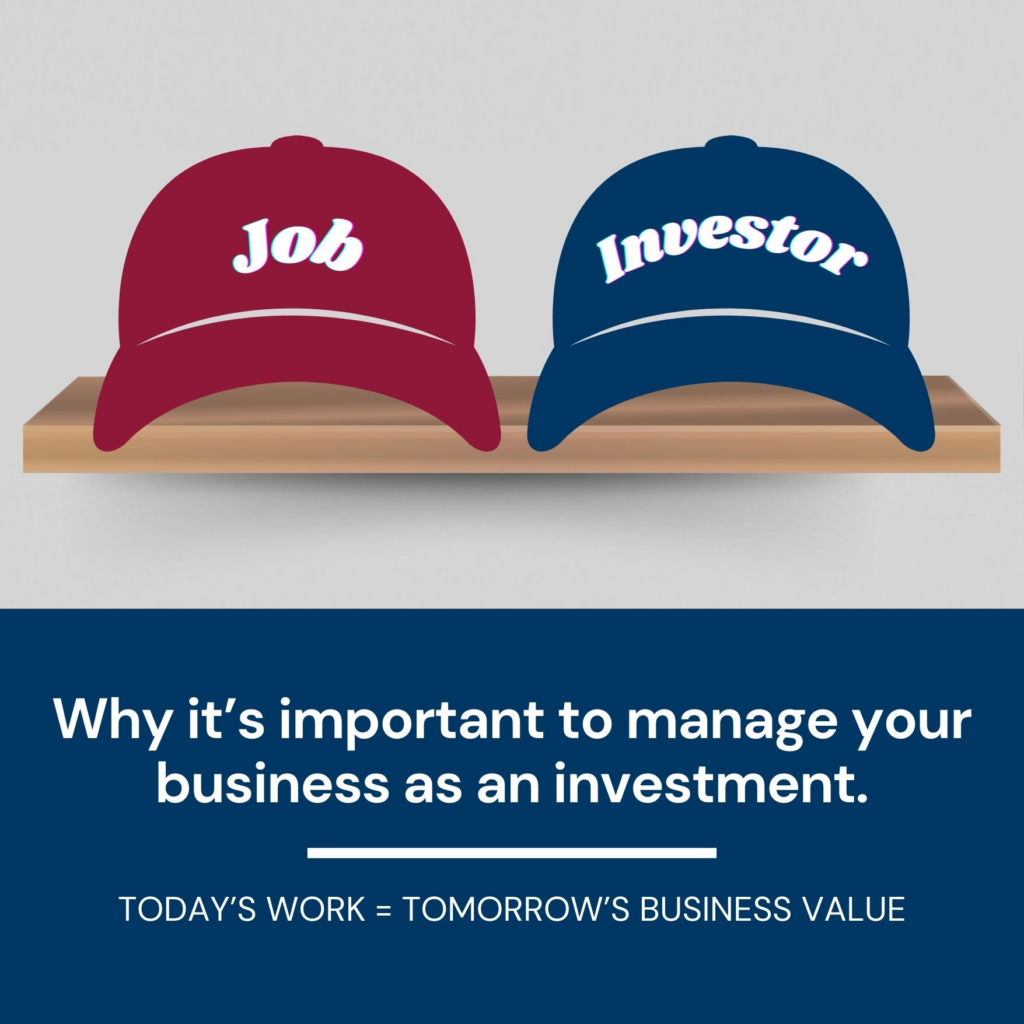What if sales growth isn’t the whole story? Business owners begin by selling something—a product, a service, or adding value to existing products or services. As the business takes root and grows, it transforms from a mere idea and typically employment for the owner, into a significant investment, likely becoming the owner’s largest asset.
In fact, a savvy business owner wears two hats:
(1) an employee generating compensation, and
(2) an investor striving to maximize returns on their business investment.

While sales growth is crucial for survival and success, it’s just one aspect of enhancing business value. Increasing business value takes time, focus, and a deep understanding of the factors influencing business value—factors that educated buyers also scrutinize.
Considering both quantitative and qualitative factors, numerous components impact business value. Here’s a glimpse of a few drivers affecting most businesses and how to move beyond just the number on the company’s financial statements to maximize value:
- 1. Sales Quality and Trends
- ● Are revenues declining, stable, or growing?
– Buyers like to see steady, gradual growth, not significant peaks and valleys from year-to-year - ● Do sales to customers recur annually?
– Recurring sales streamline operations and focus, and add confidence to sustainable revenue streams. - ● Are there contracts with customers that define the length and terms of the relationship?
– Are these contracts assignable?
– Are there termination clauses requiring notice?
- ● Are revenues declining, stable, or growing?
- 2. Gross Profit Trends
- ● A key driver that results in multiplicative benefits
– Sales minus cost of goods sold equals gross profit.
– Even a 1% improvement in gross profit margin has a significant impact on value.
- ● A key driver that results in multiplicative benefits
- 3. Operating expenses
- ● Analyzing year-end expense trends over the past three to five years of expense detail is far more useful than looking at one specific amount from any given year.
– This also helps “cleanup” expense categories that may not be categorized consistently.
– Document any one-time (non-recurring) expenses to clarify inconsistencies. If noted annually, these on-time types of expenses will be recalled more easily when looking back over the past 5 years of expenses. - ● Key expense areas to scrutinize:
– Labor—ensure compensation aligns with market trends and levels.
– Insurance—periodically review estimates to prevent significant “cost creep” as this expense can increase significantly if ignored.
– Consider reducing costs by outsourcing to specialists such as payroll processing.
– Benchmark the company’s performance against peers to identify areas for improvement.
- ● Analyzing year-end expense trends over the past three to five years of expense detail is far more useful than looking at one specific amount from any given year.
Regardless of when an owner believes they will transition out of ownership, a focus on proactive, intentional decision-making with both quantitative and qualitative factors in mind means the owner is protecting their investment and can result in far better outcomes. Too many times life events, both positive and negative, surprise owners requiring an earlier exit than initially planned. When unprepared, we see the seller start the negotiations in less than ideal conditions and, as a result, receive less for their business.
For 50 years, our firm has partnered with business owners to craft strategies for continually increasing the value of their business investment. Regardless of their exit strategy timeline, understanding and focusing on the drivers of value in a business enables better decision-making to optimize outcomes. This ensures owners are prepared, even if the timing of their exit isn’t entirely within their control, to recognize maximum value.
If you would like to discuss a specific business situation please schedule a Complimentary Consultation or call us at 608-257-2757.

